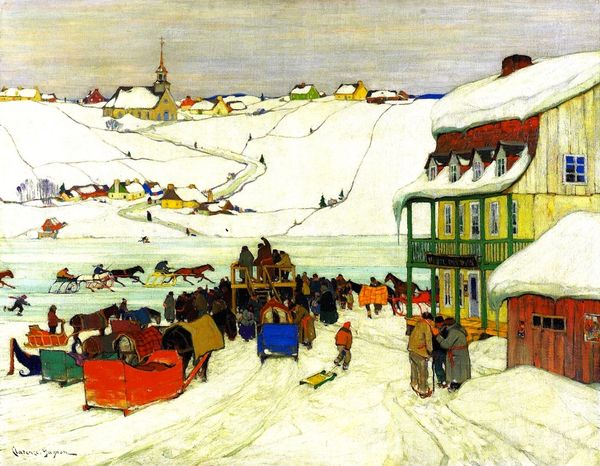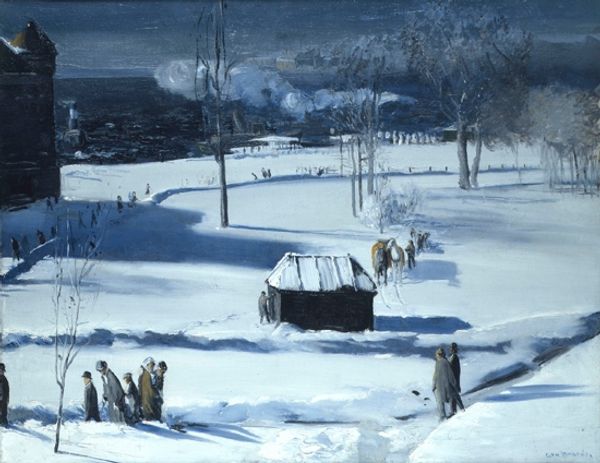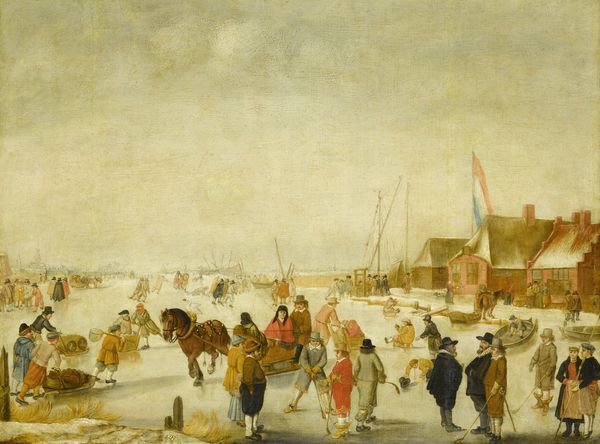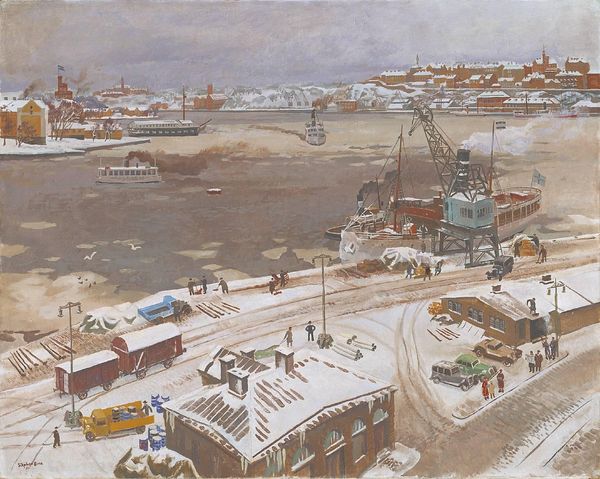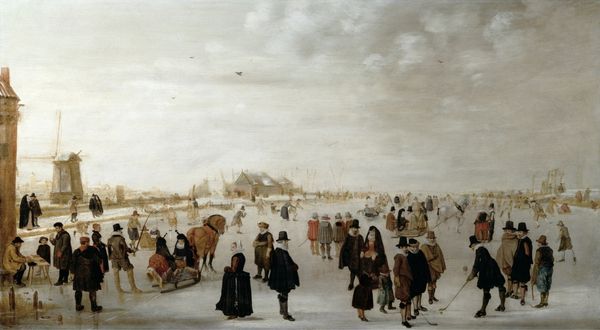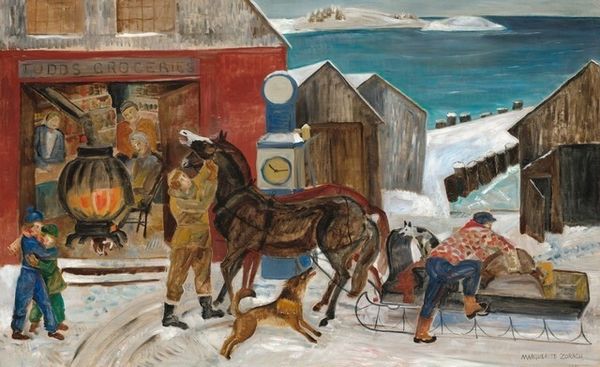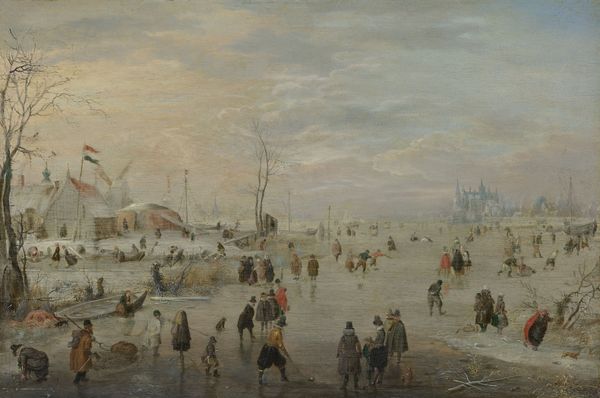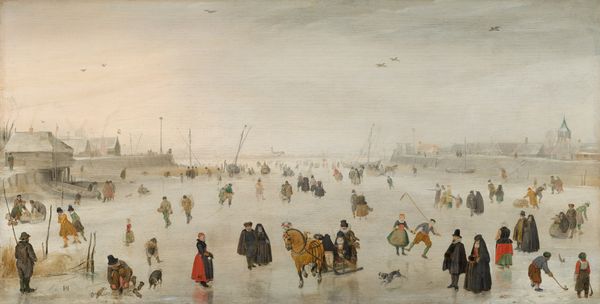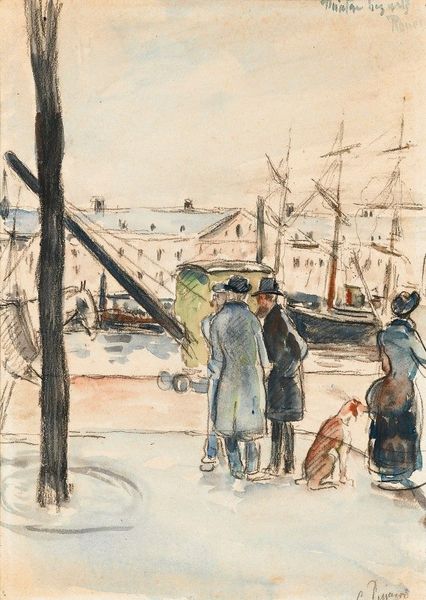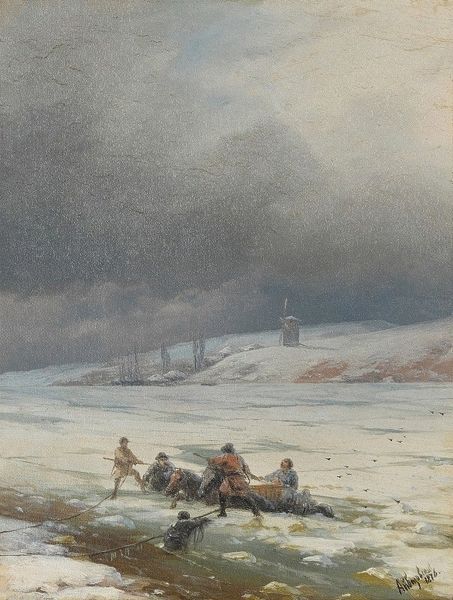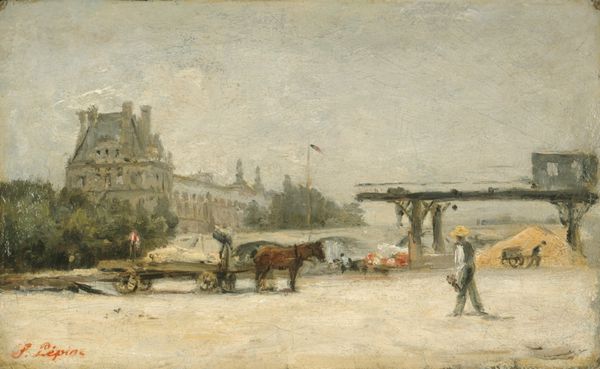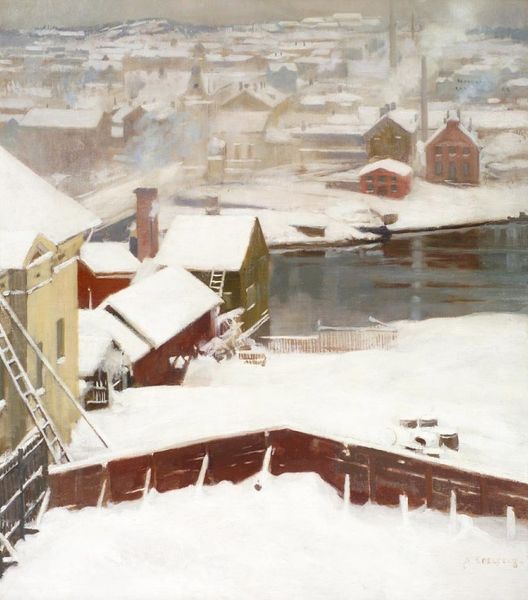
painting, oil-paint
#
portrait
#
figurative
#
painting
#
impressionism
#
oil-paint
#
landscape
#
charcoal drawing
#
figuration
#
oil painting
#
cityscape
#
genre-painting
Copyright: Public Domain: Artvee
Curator: Looking at Albert Edelfelt’s 1889 oil-on-canvas piece, "Winter Day In Helsinki Market Square, Study," I’m immediately struck by how bleak yet bustling it appears. The muted palette really evokes the chill of a Finnish winter. Editor: Bleak is certainly a word for it! What fascinates me are the materials themselves. Notice the heavy impasto, especially in the snow. You can practically feel the thickness of the oil paint, how it mimics the weighty texture of packed snow underfoot. It really brings the scene to life in a tangible way. Curator: Indeed. Edelfelt was working within the Impressionist style but interpreted it through a specifically Finnish lens. The painting serves as a powerful record of the daily life in Helsinki, reflecting the social and economic conditions of the late 19th century. Markets like these were crucial hubs, central to the local economy. Editor: Absolutely. The placement of labor—the people huddled at stalls, the horses waiting with their carts—it speaks to the vital role that market life played. It underscores the very physical exchange of goods and services, a direct engagement with materials we often lose sight of today. Look closely at how the goods are rendered with rapid brushstrokes; they appear almost indistinguishable. Curator: That’s an astute point. I'd also say that its success resided in democratizing art; portraying a mundane scene like a winter market, filled with ordinary people. It's no longer just about glorifying nobility or historical events. Instead, Edelfelt highlights the unsung heroes of the everyday, in what became a key shift in artistic subjects. Editor: It does challenge conventional hierarchies in subject matter. However, don't forget the physicality, the labor *behind* this image itself: Edelfelt's hand, the grind of pigments, the weave of the canvas...These processes shaped its message just as much as the scene he depicts. It moves us to consider not only "what" we see, but "how" it came to be. Curator: That's a great point; by examining the means of production, we enrich our interpretation of this painting. Editor: Exactly. This exploration unveils a painting that reflects the textures of work, life, and artistic creation interwoven, layer upon layer.
Comments
No comments
Be the first to comment and join the conversation on the ultimate creative platform.


